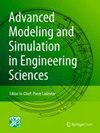基于模型和数据驱动的混合方法相结合的最优轨迹规划
IF 3.2
Q3 MECHANICS
Advanced Modeling and Simulation in Engineering Sciences
Pub Date : 2024-04-29
DOI:10.1186/s40323-024-00266-2
引用次数: 0
摘要
轨迹规划的目的是通过最小化成本函数计算出最佳轨迹。本文考虑了四种不同的情况:(i) 第一种情况是给定的轨迹,通过作用于轨迹上的速度,使成本函数最小化;(ii) 第二种情况是以参数表示的轨迹,根据参数计算出最优路径和沿途速度;(iii) 只知道轨迹的出发点和到达点,但必须确定最优路径;最后,(iv) 涉及轨迹运行环境的不确定性。当所考虑的成本函数以分析方式表示时,应用欧拉-拉格朗日方程是一个很有吸引力的选择。然而,在许多应用中,复杂的成本函数是通过黑盒机器学习技术(如深度神经网络)来学习的。在这种情况下,采用神经方法进行轨迹规划就成了一种有吸引力的选择。不同的数值实验将有助于说明所建议的方法在一些选定使用案例中的潜力。本文章由计算机程序翻译,如有差异,请以英文原文为准。
Optimal trajectory planning combining model-based and data-driven hybrid approaches
Trajectory planning aims at computing an optimal trajectory through the minimization of a cost function. This paper considers four different scenarios: (i) the first concerns a given trajectory on which a cost function is minimized by a acting on the velocity along it; (ii) the second considers trajectories expressed parametrically, from which an optimal path and the velocity along it are computed; (iii), the case in which only the departure and arrival points of the trajectory are known, and the optimal path must be determined; and finally, (iv) the case involving uncertainty in the environment in which the trajectory operates. When the considered cost functions are expressed analytically, the application of Euler–Lagrange equations constitutes an appealing option. However, in many applications, complex cost functions are learned by using black-box machine learning techniques, for instance deep neural networks. In such cases, a neural approach of the trajectory planning becomes an appealing alternative. Different numerical experiments will serve to illustrate the potential of the proposed methodologies on some selected use cases.
求助全文
通过发布文献求助,成功后即可免费获取论文全文。
去求助
来源期刊

Advanced Modeling and Simulation in Engineering Sciences
Engineering-Engineering (miscellaneous)
CiteScore
6.80
自引率
0.00%
发文量
22
审稿时长
30 weeks
期刊介绍:
The research topics addressed by Advanced Modeling and Simulation in Engineering Sciences (AMSES) cover the vast domain of the advanced modeling and simulation of materials, processes and structures governed by the laws of mechanics. The emphasis is on advanced and innovative modeling approaches and numerical strategies. The main objective is to describe the actual physics of large mechanical systems with complicated geometries as accurately as possible using complex, highly nonlinear and coupled multiphysics and multiscale models, and then to carry out simulations with these complex models as rapidly as possible. In other words, this research revolves around efficient numerical modeling along with model verification and validation. Therefore, the corresponding papers deal with advanced modeling and simulation, efficient optimization, inverse analysis, data-driven computation and simulation-based control. These challenging issues require multidisciplinary efforts – particularly in modeling, numerical analysis and computer science – which are treated in this journal.
 求助内容:
求助内容: 应助结果提醒方式:
应助结果提醒方式:


